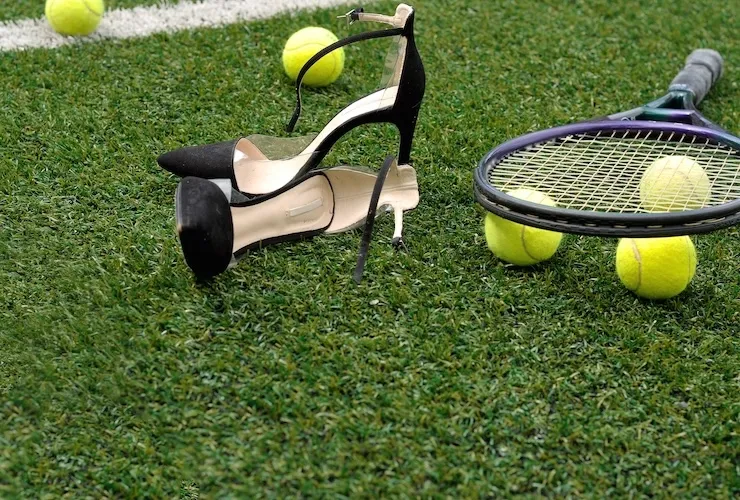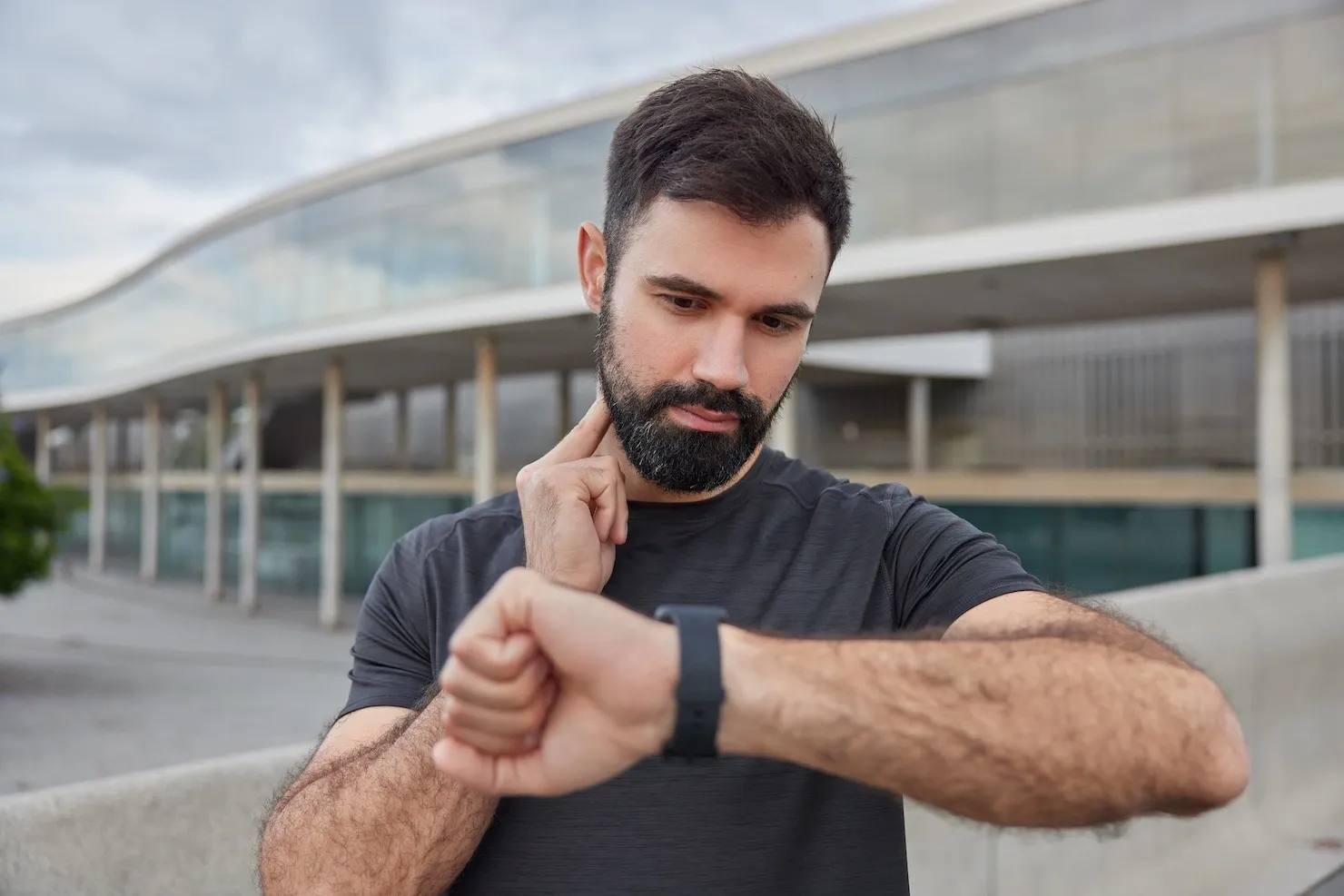In the world of athletic footwear, the choices can be overwhelming. Understanding the differences between tennis and running shoes is crucial in selecting the proper footwear for your specific activities. From sole design to cushioning and support, each type of shoe is tailored to meet the demands of its respective sport.
This comprehensive guide will delve into the critical disparities between tennis and running shoes, exploring the nuances in sole design, upper material, weight, and traction. We will address the best practices for choosing the appropriate footwear for each activity and uncover whether tennis shoes can be used for running and vice versa.
Key Takeaways:
- Tennis shoes are specifically designed for tennis, with features like a flat sole and supportive upper material for lateral movements.
- Running shoes are designed for running, with cushioning and flexibility for impact absorption and forward movement.
- The critical differences between tennis and running shoes include sole design, upper material, cushioning, weight, and traction, making each suitable for their respective activities.
What Are Tennis Shoes?
Tennis shoes are footwear designed to provide lateral stability and support for various movements during tennis and other athletic activities.
The design of these shoes incorporates features such as a supportive and cushioned midsole to absorb impact during quick lateral movements on the tennis court. The outsole is often made of durable rubber with a tread pattern that provides traction and grip, essential for swift changes in direction and sudden stops.
The shoe's upper part is typically constructed using breathable materials, offering comfort and ventilation during intense play. Specialized support structures around the heel and arch enhance stability, aiding players in maintaining balance and agility.
What Are Running Shoes?
Running shoes are specifically crafted to provide optimal performance and cushioning for repetitive forward-rolling foot strikes while offering superior shock absorption during running and other forms of exercise.
The design of running shoes entails a combination of features aimed at enhancing comfort and strategic support elements that promote a natural foot motion while maintaining stability and balance.
These shoes are engineered to accommodate running biomechanics, addressing the foot's neutrality, pronation, or supination.
What Are the Key Differences Between Tennis Shoes and Running Shoes?
The primary differences between tennis and running shoes lie in their emphasis on lateral stability and cushioned support for tennis footwear. In contrast, running shoes prioritize lightweight design and shock-absorbing capabilities for long-distance running and a wide range of athletic activities.
Regarding tennis shoes, lateral stability is essential for quick lateral movements on the court, and cushioning is needed to absorb the impact of sudden stops and starts. In contrast, running shoes are designed to provide optimal shock absorption, promoting a smooth heel-to-toe transition, and they are typically lighter in weight to reduce fatigue during long-distance runs.
Tennis shoes often have more durable outsoles to withstand the abrasive surface of tennis courts, compared to running shoes, which are engineered for traction on the road.
#1 Sole Design
The sole design of tennis shoes often incorporates specific tread patterns and outsole materials to provide traction on different court surfaces, while running shoes, especially trail shoes, may feature flat outsoles for enhanced grip on rough terrains.
Tennis shoe outsoles are engineered with distinct herringbone, pivot, or zonal patterns to facilitate quick lateral movements on hard courts, clay, or grass surfaces. The outsole materials, such as durable rubber compounds or modified clay, ensure balanced traction and stability without compromising agility.
On the other hand, running shoe outsoles, particularly for trail running, are equipped with multidirectional lugs or aggressive treads carved in durable rubber or carbon compounds to grip uneven, soft, or muddy terrains effectively. This allows confident strides in challenging outdoor environments.
#2 Upper Material
The upper material of tennis shoes is designed to withstand the rigors of clay courts, incorporating specific design elements and stiff materials for durability and lateral stability. In contrast, running shoes prioritize breathability and flexibility to enhance comfort and foot movement.
Tennis shoes commonly feature uppers crafted from materials like synthetic leather or mesh, providing a balance of support and breathability, essential for withstanding the sliding and sudden lateral movements typical of tennis on clay courts. Durable features such as reinforced toe caps and side panels shield against abrasion and improve lateral stability during quick directional changes.
On the other hand, running shoes often utilize lightweight mesh, knit, or engineered textiles for their uppers, allowing for maximum airflow and movement flexibility to reduce heat buildup and enhance the foot's natural range of motion. This emphasis on breathability and flexibility is crucial in preventing overheating and promoting a smooth, natural stride during running activities.
#3 Cushioning and Support
Tennis shoes prioritize cushioning and lateral support, resulting in a potentially heavier shoe with ample cushioning to mitigate shocks and provide stability. In contrast, running shoes offer varying degrees of cushioning, with some models featuring lots of cushioning for enhanced comfort and impact absorption during long-distance running.
Regarding cushioning, tennis shoes are designed to handle the quick, lateral movements often seen in tennis, emphasizing shock absorption and stability for sudden changes in direction on the court. It results in a more substantial shoe than running shoes, offering better support for the ankles and lateral movements.
#4 Weight
Tennis shoes tend to be heavier due to their focus on lateral stability and durability, while running shoes, especially lightweight models, prioritize reduced weight to enhance agility and efficiency during running and other athletic pursuits.
Regarding tennis shoes, the emphasis on lateral stability and support dictates a sturdier construction, often resulting in a higher weight. This feature is crucial for tennis players as it allows for sudden lateral movements and quick stops on the court.
On the other hand, running shoes, particularly those designed for speed and performance, strive to minimize weight to optimize the runner's stride and minimize fatigue.
#5 Traction
Tennis shoes feature specific outsole treads and tread patterns to optimize traction on clay courts and other surfaces. In contrast, running shoes may prioritize versatile traction patterns for various terrains encountered during running and trailblazing activities.
The outsole tread design for tennis shoes is carefully crafted to provide a multidirectional grip on clay courts, allowing players to quickly change direction while maintaining stability and control. The herringbone pattern is a common feature, offering excellent traction and preventing slippage during lateral movements.
In contrast, running shoes focus on accommodating various terrains, utilizing lug patterns to deliver enhanced grip on uneven terrain. The reinforced heel and forefoot areas often have unique patterns to improve traction during uphill and downhill runs, ensuring a secure foothold on challenging surfaces.
Which Type of Shoe is Best for Which Activity?
Tennis shoes are best suited for tennis and similar court-based sports that require lateral stability, quick stops, and multi-directional movements. In contrast, running shoes excel in comfort and support for long-distance running, brisk walking, and a wide range of athletic activities.
Tennis shoes are designed with features that cater to the specific demands of the sport, such as durable outsoles for traction on hard courts, reinforced toe caps for frequent toe dragging, and supportive midsoles for lateral movements.
In contrast, running shoes prioritize cushioning and shock absorption to reduce the impact on the feet and joints during repetitive forward motion, with breathable uppers for ventilation and flexible soles to facilitate the natural rolling motion of the feet.
Tennis Shoes for Tennis
Tennis shoes are designed to facilitate lateral movements, quick stops, and stability on clay courts, making them the ideal footwear choice for tennis players and enthusiasts who engage in frequent court-based activities.
The support provided by tennis shoes is paramount, particularly when executing quick lateral movements to reach the ball. These shoes offer the necessary stability to make sudden stops, which is crucial for accurate shots.
The outsole patterns tailored to different court surfaces enhance traction and safety, allowing players to move swiftly and confidently. The superior cushioning and impact absorption of tennis shoes further minimizes the risk of foot and ankle injuries during intense gameplay.
Running Shoes for Running
Running shoes excel in exceptional shock absorption and comfort for long-distance running, making them well-suited for road runners, trailblazers, and individuals engaged in extended running activities.
These specialized running shoes are designed with shock-absorbing materials and advanced cushioning systems to minimize the impact on the joints and muscles, offering protection and support during high-impact activities.
Whether navigating urban streets or rugged trails, the comfort provided by running shoes allows for sustained performance and reduced risk of injury, making them essential for those undertaking long-distance runs.
Can Tennis Shoes Be Used for Running and Vice Versa?
While tennis shoes may not provide adequate cushioning and support for long-distance running, and vice versa, running shoes may lack the lateral stability required for the multi-directional movements and quick stops common in tennis, making them unsuitable for court-based activities.
This limitation stems from the design differences in the two types of footwear. Tennis shoes typically feature a lower profile and are designed to provide stability for lateral movements on the court.
On the other hand, running shoes are equipped with extra cushioning to absorb the impact of repetitive forward motion during running and a more flexible sole to facilitate the rolling movement of the foot.
Using running shoes for tennis may increase the risk of ankle sprains or injuries due to inadequate lateral support. Conversely, utilizing tennis shoes for running might result in discomfort and fatigue, as they may not offer sufficient shock absorption and cushioning over longer distances.
What Are the Similarities Between Tennis Shoes and Running Shoes?
Both tennis and running shoes share similarities in their athletic design, emphasizing durability, breathability, and performance optimization to cater to the demanding needs of various athletic activities and sports.
Tennis and running shoes are crafted with robust materials and advanced production techniques to endure the rigors of frequent movement on hard surfaces, such as tennis courts and running tracks. Their construction integrates reinforced soles, protective toe caps, and specialized cushioning to minimize impact and enhance stability.
Furthermore, both types of footwear prioritize breathability by employing mesh panels, perforations, and moisture-wicking liners, facilitating adequate airflow and moisture management to keep the feet cool and dry during extended periods of activity.
1. Athletic Design
Both tennis and running shoes are crafted with an emphasis on athletic design, catering to the diverse needs of various sports and athletic activities, ensuring that individuals can find the correct footwear for their specific requirements, including strength training and other athletic pursuits.
Tennis shoes are specially designed to provide stability and support for quick lateral movements in tennis, with features like reinforced toes to withstand frequent drag.
On the other hand, running shoes are engineered to absorb impact and propel the foot forward, ideal for long-distance running and endurance training.
These distinct design elements showcase the versatility of both types of shoes in meeting the specific demands of their respective sports while offering individuals the flexibility to use them for other athletic activities where their unique features can enhance performance and reduce the risk of injuries.
2. Durability
Tennis and running shoes prioritize durability in their construction, with specific attention to outsole treads and overall shoe quality to ensure longevity and performance reliability during athletic endeavors.
In terms of durability in sports shoes, the outsole is a critical component. The patterns, materials, and thickness of the outsole treads are vital in providing adequate traction and withstanding the wear and tear of multiple movements on different surfaces.
In addition, the overall quality of the shoe, including the material used for the upper and midsole cushioning and construction techniques, contributes significantly to its longevity.
For tennis shoes, the focus on durability is crucial due to the lateral movements and quick directional changes involved in the game. The outsoles are designed to provide stability and support during abrupt stops and pivots, making them essential for preventing premature wear and maintaining performance over time.
Similarly, in the case of running shoes, the outsole durability directly impacts the grip and traction, especially on various terrains. A durable outsole ensures reliable performance even after extensive use, enabling runners to maintain their form and minimize slipping and discomfort.
3. Breathability
Both tennis and running shoes feature designs that prioritize breathability, ensuring optimal air circulation and comfort, particularly when navigating rough or challenging surfaces during various sports and athletic activities.
Breathability is a critical factor influencing the overall performance and comfort of athletic footwear. Whether on the tennis court or pounding the pavement, the breathable design of these shoes allows the feet to maintain a comfortable temperature, preventing excessive sweating and reducing the risk of blisters or discomfort.
The breathable materials used in these shoes also contribute to environmental adaptability, making them suitable for various conditions. This emphasis on breathability enhances the overall experience for athletes by ensuring that their feet stay dry, cool, and comfortable, irrespective of the surface or environment.



![Why Are Runners So Skinny? [In-depth Explanation]](https://wisdomrunning.com/content/images/2023/12/Why-Are-Runners-So-Skinny.webp)